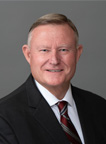S.B. 85 Secure Transport Designation Amendments
| Bill Sponsor:  Sen. Vickers, Evan J. | Floor Sponsor:  Rep. Pulsipher, Susan |
- Substitute Sponsor: Sen. Vickers, Evan J.
- Drafting Attorney: Daniel M. Cheung
- Fiscal Analyst: Russell T. Frandsen
- Bill Text
- Other Versions
- Related Documents
- Information
- Last Action: 25 Mar 2019, Governor Signed
- Last Location: Lieutenant Governor's office for filing
- Effective Date: 14 May 2019
- Session Law Chapter: 265
- Similar Bills
Bill Status / Votes
• Senate Actions • House Actions • Fiscal Actions • Other Actions
| Date | Action | Location | Vote |
| 1/21/2019 | Bill Numbered but not Distributed | Legislative Research and General Counsel | |
| 1/21/2019 | Numbered Bill Publicly Distributed | Legislative Research and General Counsel | |
| 1/25/2019 | Senate/ received bill from Legislative Research | Waiting for Introduction in the Senate | |
| 1/28/2019 | Senate/ 1st reading (Introduced) | Senate Rules Committee | |
| 1/28/2019 | Senate/ to standing committee | Senate Health and Human Services Committee | |
| 1/30/2019 | Senate/ received fiscal note from Fiscal Analyst | Senate Health and Human Services Committee | |
| 2/1/2019 | Senate Comm - Favorable Recommendation | Senate Health and Human Services Committee | 5 0 3 |
| 2/4/2019 (11:13:56 AM) | Senate/ committee report favorable | Senate Health and Human Services Committee | |
| 2/4/2019 (11:13:57 AM) | Senate/ placed on 2nd Reading Calendar | Senate 2nd Reading Calendar | |
| 2/12/2019 (3:27:59 PM) | Senate/ 2nd reading | Senate 2nd Reading Calendar | |
| 2/12/2019 (3:31:43 PM) | Senate/ passed 2nd reading | Senate 3rd Reading Calendar | 24 0 5 |
| 2/13/2019 (2:50:28 PM) | Senate/ 3rd reading | Senate 3rd Reading Calendar | |
| 2/13/2019 (2:50:46 PM) | Senate/ circled | Senate 3rd Reading Calendar | Voice vote |
| 3/5/2019 (11:05:31 AM) | Senate/ uncircled | Senate 3rd Reading Calendar | Voice vote |
| 3/5/2019 (11:06:32 AM) | Senate/ floor amendment # 1 | Senate 3rd Reading Calendar | Voice vote |
| 3/5/2019 (11:09:53 AM) | Senate/ passed 3rd reading | Clerk of the House | 27 0 2 |
| 3/5/2019 (11:09:54 AM) | Senate/ to House | Clerk of the House | |
| 3/5/2019 | House/ received from Senate | Clerk of the House | |
| 3/5/2019 | House/ 1st reading (Introduced) | House Rules Committee | |
| 3/6/2019 | House/ to standing committee | House Transportation Committee | |
| 3/8/2019 | House Comm - Substitute Recommendation from # 0 to # 1 | House Transportation Committee | 10 0 2 |
| 3/8/2019 | House Comm - Favorable Recommendation | House Transportation Committee | 10 0 2 |
| 3/8/2019 | House/ comm rpt/ substituted | House Substituted Bill | |
| 3/8/2019 | House/ return to Rules due to fiscal impact | House Rules Committee | |
| 3/11/2019 | LFA/ fiscal note sent to sponsor | House Rules Committee | |
| 3/11/2019 | LFA/ fiscal note publicly available | House Rules Committee | |
| 3/11/2019 | House/ Rules to 3rd Reading Calendar | House 3rd Reading Calendar for Senate bills | |
| 3/11/2019 (5:38:54 PM) | House/ 2nd reading | House 3rd Reading Calendar for Senate bills | |
| 3/12/2019 (4:38:24 PM) | House/ 3rd reading | House 3rd Reading Calendar for Senate bills | |
| 3/12/2019 (4:40:50 PM) | House/ passed 3rd reading | Senate Secretary | 69 2 4 |
| 3/12/2019 (4:40:52 PM) | House/ to Senate | Senate Secretary | |
| 3/12/2019 (5:38:59 PM) | Senate/ received from House | Senate Secretary | |
| 3/12/2019 (5:39:00 PM) | Senate/ placed on Concurrence Calendar | Senate Concurrence Calendar | |
| 3/12/2019 (6:06:53 PM) | Senate/ concurs with House amendment | House Speaker | 22 0 7 |
| 3/12/2019 (6:06:54 PM) | Senate/ to House | House Speaker | |
| 3/12/2019 | House/ received from Senate | House Speaker | |
| 3/12/2019 | House/ signed by Speaker/ returned to Senate | Senate President | |
| 3/12/2019 | House/ to Senate | Senate President | |
| 3/13/2019 | Senate/ received from House | Senate President | |
| 3/13/2019 | Senate/ signed by President/ sent for enrolling | Legislative Research and General Counsel / Enrolling | |
| 3/14/2019 | Bill Received from Senate for Enrolling | Legislative Research and General Counsel | |
| 3/14/2019 | Draft of Enrolled Bill Prepared | Legislative Research and General Counsel / Enrolling | |
| 3/19/2019 | Enrolled Bill Returned to House or Senate | Senate Secretary | |
| 3/19/2019 | Senate/ enrolled bill to Printing | Senate Secretary | |
| 3/21/2019 | Senate/ received enrolled bill from Printing | Senate Secretary | |
| 3/21/2019 | Senate/ to Governor | Executive Branch - Governor | |
| 3/25/2019 | Governor Signed | Lieutenant Governor's office for filing |
Committee Hearings/Floor Debate
- Committee Hearings
- Floor Debates
- Senate Floor Audio, Day 16 (2/12/2019) [SB85 Secure Transport Designation Amendments, Vickers]
- Senate Floor Audio, Day 17 (2/13/2019) [SB85 Secure Transport Designation Amendments, Vickers]
- Senate Floor Audio, Day 36 (3/5/2019) [SB85 Secure Transport Designation Amendments, Vickers]
- Senate Floor Audio, Day 43 (3/12/2019) [1SB85 Secure Transport Designation Amendments, Vickers]
- House Floor Audio, Day 43 (3/12/2019) [SB85S1]
